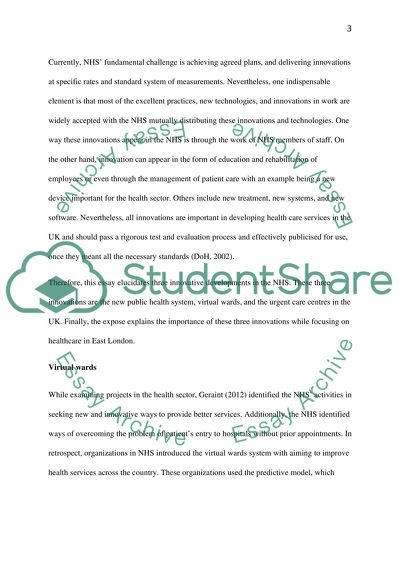Cite this document
(“Review three major innovative developments in NHS health provision Essay - 1”, n.d.)
Review three major innovative developments in NHS health provision Essay - 1. Retrieved from https://studentshare.org/health-sciences-medicine/1594522-review-three-major-innovative-developments-in-nhs-health-provision-explain-the-important-of-these-three-health-service-innovations-and-changes-for-the-provision-of-nhs-care-in-east-london-and-offer-an-evaluation-of-their-usefulness-and-success
Review three major innovative developments in NHS health provision Essay - 1. Retrieved from https://studentshare.org/health-sciences-medicine/1594522-review-three-major-innovative-developments-in-nhs-health-provision-explain-the-important-of-these-three-health-service-innovations-and-changes-for-the-provision-of-nhs-care-in-east-london-and-offer-an-evaluation-of-their-usefulness-and-success
(Review Three Major Innovative Developments in NHS Health Provision Essay - 1)
Review Three Major Innovative Developments in NHS Health Provision Essay - 1. https://studentshare.org/health-sciences-medicine/1594522-review-three-major-innovative-developments-in-nhs-health-provision-explain-the-important-of-these-three-health-service-innovations-and-changes-for-the-provision-of-nhs-care-in-east-london-and-offer-an-evaluation-of-their-usefulness-and-success.
Review Three Major Innovative Developments in NHS Health Provision Essay - 1. https://studentshare.org/health-sciences-medicine/1594522-review-three-major-innovative-developments-in-nhs-health-provision-explain-the-important-of-these-three-health-service-innovations-and-changes-for-the-provision-of-nhs-care-in-east-london-and-offer-an-evaluation-of-their-usefulness-and-success.
“Review Three Major Innovative Developments in NHS Health Provision Essay - 1”, n.d. https://studentshare.org/health-sciences-medicine/1594522-review-three-major-innovative-developments-in-nhs-health-provision-explain-the-important-of-these-three-health-service-innovations-and-changes-for-the-provision-of-nhs-care-in-east-london-and-offer-an-evaluation-of-their-usefulness-and-success.


